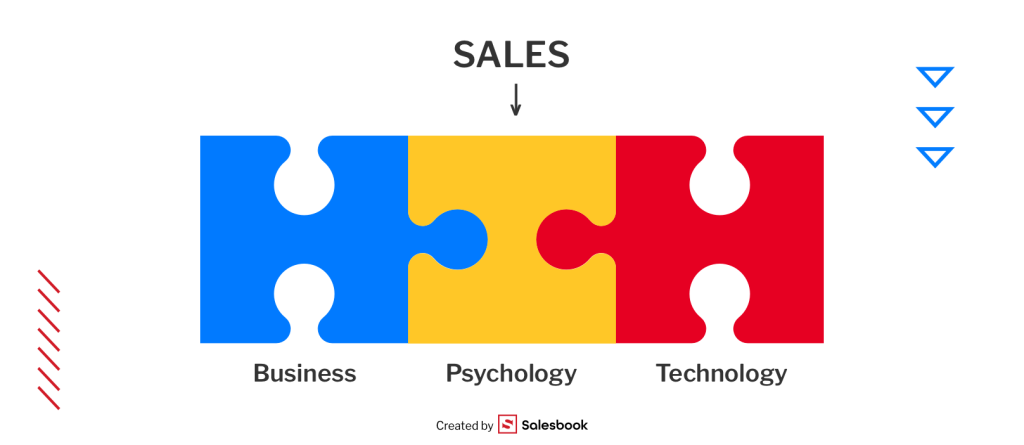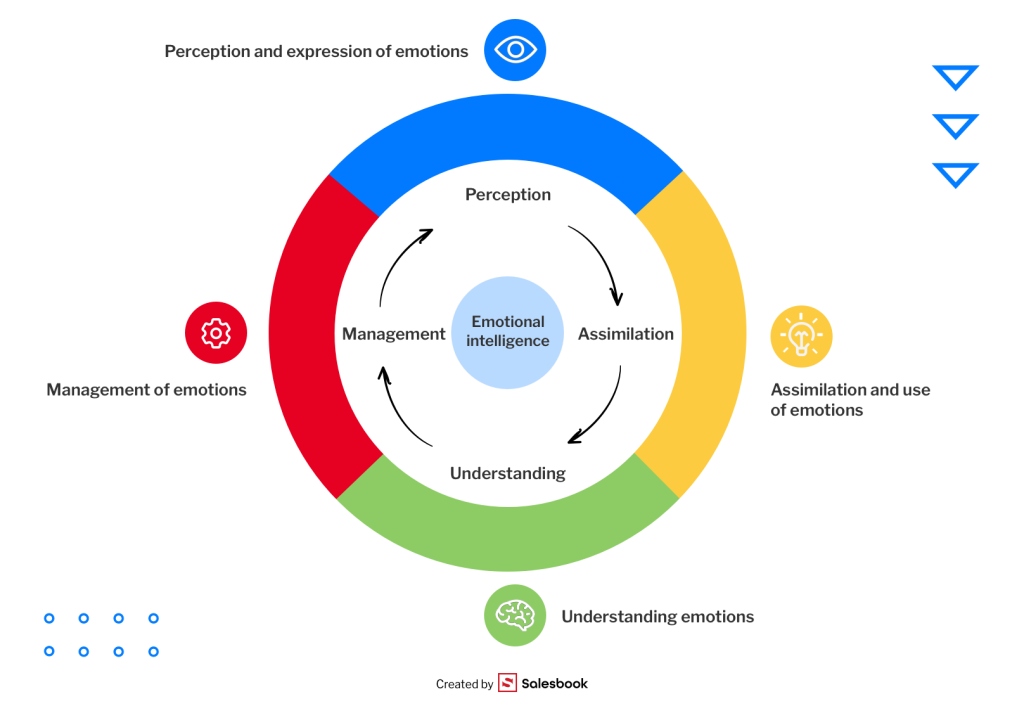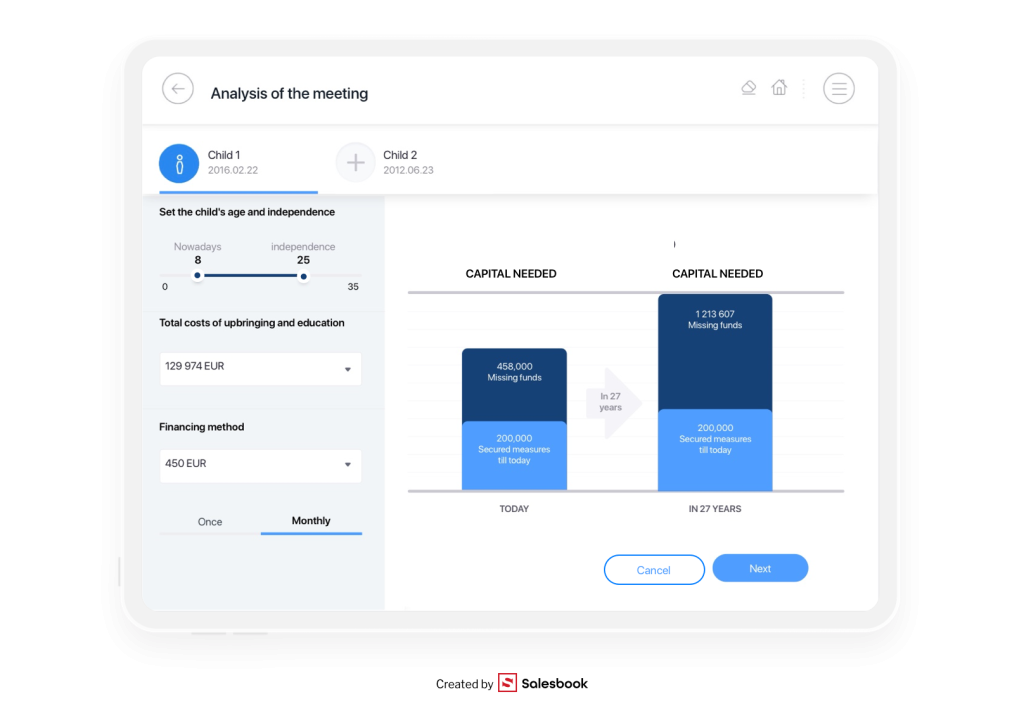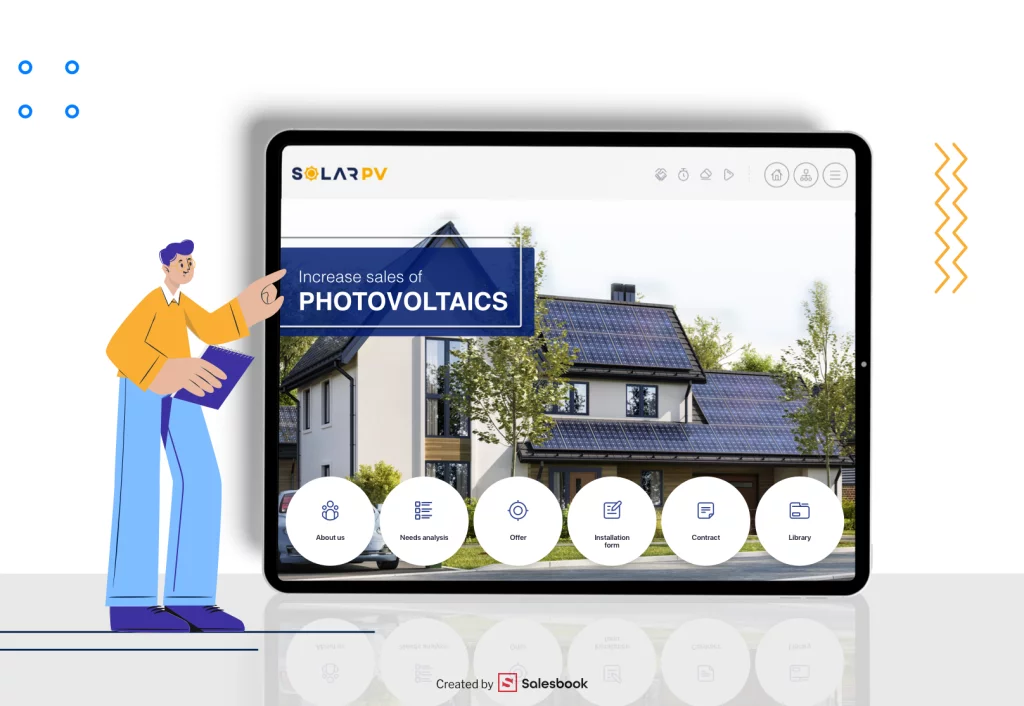10 habits of an Effective Salesperson: Mastering Business, Psychology, and Sales Techniques

This guide is a vital toolkit for sales professionals, merging key aspects of business strategy, psychological understanding, and sales methodologies. It’s not just about selling products or services; it’s about mastering the art of sales through a deep understanding of customer behavior and effective communication. Each principle is illustrated with real-life examples and practical advice, aimed at enhancing your sales performance and building lasting customer relationships. Dive into this comprehensive guide to refine your skills of effective salesperson and excel in the complex and rewarding world of sales.
Introduction to Sales Excellence
As we embark on exploring the 10 principles of an effective salesperson, it’s essential to first lay the groundwork for what constitutes sales excellence. This section delves into the intricate relationship between business strategies, psychological insights, and advanced sales techniques, setting the stage for a deeper understanding of the transformative role of a modern salesperson.

The Interplay of Business, Psychology, and Sales
Sales excellence is an intricate dance between proven sales techniques and the subtle art of human psychology. It’s a world where effective sales techniques are not just about closing deals but also about understanding the complex layers of human behavior. An effective salesperson is akin to a psychologist, deciphering customer messages and tailoring their approach to ensure customer satisfaction.
In this realm, loyal customers are not just won through exceptional customer care but also through understanding their needs and expectations. The sales cycle, therefore, is not a linear journey but a dynamic process, evolving with each customer interaction. A customer service representative or agent is no longer just a facilitator of transactions but plays a crucial role in customer retention and care.
The most effective sales techniques involve more than just a rehearsed sales pitch; they require personalized customer interactions. It’s about creating a mutually beneficial relationship, where the salesperson understands and anticipates the needs of existing customers, making each interaction count.

The Evolving Role of an Effective Salesperson in Modern Business
Gone are the days when a salesperson’s role was limited to pushing products. In today’s business landscape, the sales team is at the forefront of building and maintaining customer relationships. The best sales techniques now involve a blend of empathy, strategic thinking, and adaptability.
Customers expect more than just answers; they seek experiences. The salesperson of today is a customer service agent, an advisor, and a consultant, all rolled into one. They navigate customer messages, often playing the dual role of a listener and a problem-solver.
This evolution reflects a shift towards more meaningful and personalized customer interactions. The goal is not just customer acquisition but nurturing a long-lasting, loyal customer base. It’s about transforming a simple purchase into a journey of mutual growth and understanding – a hallmark of true sales excellence.

Principle 1: Understanding Customer Psychology
In Principle 1, we delve into the fundamental aspect of sales: understanding customer psychology. This section explores how empathy and active listening form the bedrock of effective customer relations, laying the foundation for building lasting connections and enhancing customer satisfaction.
Empathy: The Heart of Customer Relations
Great customer service begins with empathy, the cornerstone of building an emotional connection with customers. It’s about seeing the world through their eyes, understanding their needs and pain points, and responding with genuine care. A customer care strategy rooted in empathy leads to higher customer satisfaction levels, as it resonates on a personal level. This approach transforms a customer care team from mere problem solvers into architects of customer loyalty. For instance, when a team member listens to customer feedback and acts on it, they’re not just resolving an issue but are actively contributing to the narrative of customer success.

The Art of Listening and Identifying Customer Needs
Understanding customer psychology is not just about what is said, but also about what is left unsaid. The art of listening extends beyond hearing words; it involves perceiving the underlying emotions and unexpressed desires of potential customers. This skill is pivotal in crafting a positive customer experience that goes beyond the transactional level.
It’s about deciphering the silent messages conveyed through customer feedback and using this insight to enhance every interaction. A well-trained customer care team, adept in this art, can significantly elevate customer satisfaction by addressing not just the expressed needs but also anticipating the unarticulated ones.

Understanding customer psychology isn’t just about passively hearing their words; it’s an active, strategic process. Here are some specific techniques and philosophies that can elevate a salesperson’s ability to listen and identify customer needs effectively.
Effective Sales Techniques: Listening & Identifying Customer Needs
- Active Listening: This involves fully concentrating on the customer, understanding their message, responding thoughtfully, and remembering the conversation. It’s about showing genuine interest in their words and encouraging them to share more.
- Mirroring and Paraphrasing: Reflecting the customer’s words and sentiments back to them can validate their feelings and show that you are engaged in the conversation. Paraphrasing what they say also helps in ensuring that you have correctly understood their needs.
- Asking Open-Ended Questions: Encourage customers to express themselves freely by asking questions that require more than a ‘yes’ or ‘no’ answer. This can uncover deeper insights into their needs and expectations.
- Emotional Intelligence: Being attuned to the customer’s emotional cues and responding appropriately can create a stronger connection. This involves being aware of both your own emotions and those of the customer during interactions.
- Utilizing the ‘5 Whys’ Technique: Originally developed for business problem-solving, this technique involves asking ‘why’ multiple times (typically five) to get to the root cause of a customer’s need or problem. It helps in understanding the deeper issues they are facing.
- Empathetic Listening: This goes beyond just understanding the words. It’s about tuning into the customer’s emotional state and showing empathy, which can be particularly effective in addressing pain points and building trust.
- Silence as a Tool: Sometimes, allowing for a pause in conversation can give customers the space to express thoughts they might not have shared in a rapid-fire dialogue. It shows respect for their thoughts and gives you additional insights.
By incorporating these techniques and philosophies into their interactions, effective salesperson can transform standard customer service into exceptional customer care, leading to higher customer satisfaction levels and fostering stronger customer loyalty.

Principle 2: Building Trust and Credibility
Trust and credibility are the bedrock of successful sales interactions. In this section, we explore how sales professionals can nurture these essential qualities. By focusing on establishing authentic connections and demonstrating consistency and reliability, effective salesperson can significantly enhance the customer experience and drive successful outcomes.
Establishing Authentic Connections
Authenticity in sales is not just a buzzword; it’s a key differentiator in a crowded market. Establishing authentic connections with prospective customers involves more than just delivering a sales pitch; it’s about engaging in meaningful sales conversations that resonate on a personal level. This starts with thorough customer research, ensuring that every interaction is informed and relevant to the customer’s journey.
Top sales techniques for building authentic connections include:
- Personalized Sales Training: Equip your sales team with the knowledge to understand various customer profiles and tailor their approach accordingly.
- Genuine Interest and Curiosity: Show a real interest in the customer’s needs and concerns, beyond just making a sale.
- Storytelling in Sales Presentations: Incorporate stories and examples that the customer can relate to, making your presentations more engaging and memorable.

Consistency and Reliability in Sales Interactions
Consistency and reliability are what convert one-time buyers into long-term loyal customers. This involves not just the initial sale but the entire sales funnel, from the first interaction to post-sale customer support. Consistent selling techniques, aligned with the company culture and business goals, create a cohesive customer experience.
Key strategies include:
- Standardized Sales Training: Ensure your sales team is trained in sales techniques backed by successful track records.
- Regular Follow-Up: Keep in touch with new customers and offer continuous support, reinforcing the notion that you value their business.
- Robust Technical Support: A reliable technical support team is crucial in demonstrating your commitment to customer care vs. customer transaction.
- Feedback Loop: Encourage and act upon customer feedback, showing that you are invested in their success and satisfaction.
Incorporating these elements into your sales strategy not only enhances customer trust but also aligns closely with your business’s broader goals and values. It’s a symbiotic relationship where trust and credibility are not just beneficial for customer acquisition but are integral to achieving long-term business success.

Principle 3: Effective Communication Skills
Navigating the world of sales without effective communication skills is like trying to text with a flip phone – possible, but not exactly efficient. In this section, we’ll delve into the art of both clarity and persuasion in sales pitches, as well as the subtle yet powerful impact of non-verbal communication.
Clarity and Persuasion in Sales Pitches
The key to a great sales pitch isn’t just what you say, but how clearly you say it. Think of it like a GPS navigation for your customer – it needs to provide clear directions to the destination (your product or service) without unnecessary detours.
- Simplicity is Key: Keep your language simple and jargon-free. If your pitch sounds like a science thesis, you might lose your audience.
- Focus on Benefits: It’s less about the nuts and bolts and more about how it makes their life easier, better, or maybe just a bit more fun.
- A Dash of Storytelling: People love stories, so why not weave one into your pitch? Just avoid the “Once upon a time…” opener.

Non-Verbal Communication and its Impact on Sales
Non-verbal communication, such as body language, facial expressions, and tone of voice, plays a significant role in sales. These cues can reinforce your message, build rapport, and help gauge customer reactions and feelings.
Strategies for effective non-verbal communication include:
- Positive Body Language: Use open gestures, maintain eye contact, and mirror your customer’s body language to build rapport.
- Tone of Voice: Vary your tone to emphasize key points and show enthusiasm about your offering.
- Observing Customer Cues: Pay attention to the customer’s non-verbal signals as feedback on how your message is being received.
By mastering both the spoken and unspoken elements of communication, you can turn your sales interactions from monologues into engaging dialogues, making every conversation a step towards a successful sale.

Principle 4: Strategic Thinking and Planning
In the game of sales, strategic thinking and planning are your chess moves. This principle focuses on setting realistic sales goals and embracing long-term planning, combined with the agility to adapt to changing market dynamics. It’s about playing the long game, where understanding the buyer’s perspective and responding to their evolving needs can give you a competitive edge.
Setting Realistic Sales Goals
Setting realistic sales goals is akin to setting the destination in your business journey. It’s about finding the sweet spot between ambition and attainability.
- Understand Your Buyer: Put yourself in the buyer’s shoes. This understanding will help you set goals that resonate with the needs and expectations of individual customers.
- Measure What Matters: Goals should be quantifiable, but choose metrics that truly reflect customer satisfaction and your brand’s reputation.
- Be Ready to Pivot: If the market shifts or the customer feels a different need, be prepared to act immediately and adjust your goals.

Long-term Planning and Adaptability
Long-term planning in sales is not just about foreseeing the future; it’s about being prepared to dance to its tune. In the world of business, change is the only constant.
- From Initial Call to Ongoing Support: Consider the entire customer journey, from the initial call to ongoing customer support. This holistic view will help you create a strategy that not only wins customers but also retains them.
- Personalized Response: Train your support agents to offer personalized responses, not just solutions. Each positive experience reinforces your competitive edge.
- Stay Agile: Keep an eye on market trends and customer feedback. This vigilance ensures that your sales activities remain relevant and effective.
By balancing strategic long-term planning with the flexibility to adapt, you can create a sales strategy that not only meets the current demands of your customers but also anticipates their future needs.

Principle 5: Leveraging Business Acumen
At the heart of every successful sales strategy lies a keen sense of business acumen. Principle 5 dives into how understanding market trends and performing competitor analysis, coupled with aligning sales strategies with overall business objectives, can sharpen your sales process and techniques. This approach not only boosts your sales effectiveness but also ensures that your efforts contribute to the broader goals of your business.
Understanding Market Trends and Competitor Analysis
Staying ahead in sales often means keeping a finger on the pulse of the market. Understanding evolving trends and analyzing what your competitors are doing can provide invaluable insights to refine your sales techniques.
- Market Trend Analysis: Regularly research and analyze market trends to anticipate changes in customer preferences and behaviors. This knowledge allows you to adapt your sales process to stay relevant.
- Competitor Benchmarking: Keep an eye on your competitors’ strategies and performance. Learning from their successes and failures can help you identify opportunities and avoid pitfalls in your own approach.

Aligning Sales Strategies with Business Objectives
The most effective sales strategies are those that align seamlessly with the broader objectives of your business. This alignment ensures that every step of the sales process contributes to the overall success of the company.
- Integrating Business Goals: Ensure your sales objectives complement the company’s long-term goals. This could mean prioritizing customer retention over short-term gains or focusing on penetrating new markets.
- Sales and Business Synergy: Regularly communicate with other departments to understand how your sales techniques can support the overall business strategy. This synergy leads to a more cohesive and effective approach across the organization.
By leveraging business acumen in your sales approach, you create a strategy that’s not only effective in achieving sales targets but also instrumental in driving the overall success of your business.

Principle 6: Emotional Intelligence in Sales
Emotional Intelligence (EI) in sales is like having a Swiss Army knife in your toolkit – versatile and indispensable. In this principle, we explore how EI, particularly self-regulation and resilience, along with the ability to recognize and respond to emotional cues, can significantly enhance customer care and satisfaction. Mastering these aspects of EI can transform your sales technique, making you not just a salesperson but a sales whisperer.
Self-Regulation and Resilience in Sales
In the rollercoaster world of sales, self-regulation and resilience are your safety harnesses. They help you maintain your cool when the going gets tough and the tough get going.
- Stay Calm and Sell On: Practicing self-regulation helps in maintaining a composed demeanor, even when faced with challenging situations. This calmness is contagious and can positively influence the customer’s decision-making process.
- Bounce Back Like a Boomerang: Resilience in sales isn’t about never facing rejection; it’s about how quickly you can bounce back from it. Remember, every ‘no’ is one step closer to a ‘yes’.

Recognizing and Responding to Emotional Cues in Sales
Understanding and responding to emotional cues is like being a detective in a crime drama – you need to pay careful attention to the subtleties.
- Emotional Radar On: Be alert to the customer’s verbal and non-verbal emotional cues. This insight can guide your sales technique, ensuring you align your approach with their emotional state.
- Empathy Is Your Superpower: Use empathy to connect with the customer. It’s about understanding their feelings and perspectives, which can be pivotal in influencing their purchase decision.
When you combine EI with the best sales techniques, you create a powerful tool that not only drives sales but also builds strong, lasting relationships with customers. It’s a win-win!

Principle 7: Mastery of Product Knowledge
Mastery of product knowledge in sales is like being a wizard at a magic show – the more tricks you have up your sleeve, the more impressive the performance. This principle revolves around the continuous learning and adaptation of product knowledge, and the art of breaking down complex information into customer-friendly bites. For sales professionals, this deep understanding is crucial in providing support that wows the customer and influences decision makers.
Continuous Learning and Adaptation
In the fast-paced world of most businesses, products and customer needs evolve quicker than a chameleon changes colors. Staying on top of these changes is key.
- Embrace the Role of a Lifelong Learner: Continuously update your knowledge about your products, industry trends, and customer preferences. Remember, in the world of sales, knowledge is power (and power is sales!).
- Adapt to the Social Selling Scene: Social selling is the new black in sales fashion. It requires not just knowing your product but also understanding how it fits into the social media landscape where your customers hang out.

Communicating Complex Information Simply
You could have the knowledge of Einstein, but if you can’t explain your product to a five-year-old, there’s room for improvement. Simplifying complex information is an art form in sales. Adn every effective salesperson knows it.
- Use Analogies and Metaphors: These are like the fairy dust of communication, turning the mundane into something magical and understandable.
- Focus on Benefits, Not Features: Customers may not always understand technical jargon, but they do understand benefits. Tailor your explanation to show how your product makes their life easier, better, or maybe just a bit cooler.
Product knowledge is more than just a sales tool; it’s the bridge that connects customer needs with solutions. By mastering this, you not only enhance customer interactions but also cement your role as a trusted advisor in the decision-making process.

Principle 8: Networking and Relationship Building
Networking and relationship building are like gardening – you plant the seeds, nurture them, and watch as they blossom into fruitful relationships. This principle focuses on the art of cultivating long-term client relationships and leveraging social networks for sales success. It’s about going beyond the transactional nature of sales and fostering connections that last.
Cultivating Long-term Client Relationships
Building lasting client relationships is more than just a handshake and a smile. It’s a commitment to understanding and growing with your clients over time.
- Beyond the Sale Mindset: Think of each customer as a chapter in an ongoing story, not just a single transaction. This approach encourages a deeper understanding of their evolving needs.
- Consistent Customer Care: Regular check-ins and thoughtful support show your commitment. Be the support agent that customers remember for their care and attentiveness.
- Personalize Your Approach: Based on customer research, tailor your interactions. A satisfied customer is often one who feels understood and valued, not just another name on a list.

Leveraging Social Networks for Sales Success
Social networks are today’s town squares, and savvy and effective salesperson know how to make the most of these bustling digital spaces for networking and sales.
- Engage, Don’t Just Advertise: Use social platforms to engage with potential and existing clients. Share useful content, comment on posts, and be a part of the conversation.
- Social Listening: Keep an ear out for what customers are saying on social media. This can be a goldmine for customer research and understanding market trends.
- Building an Online Presence: Position yourself as a thought leader in your field. Share insights, sales tips, and industry news to attract and retain an audience interested in your expertise.
In today’s connected world, networking and relationship building are not just about face-to-face interactions. Leveraging digital tools and social networks can significantly amplify your efforts in creating lasting customer relationships.

Principle 9: Utilizing Technology and Tools
Technology and tools are not just add-ons; they are essential ingredients in the recipe for success for every effective salesperson. Principle 9 dives into how embracing digital tools and harnessing the power of data analysis can significantly enhance sales efficiency and precision. It’s about upgrading your sales toolkit to stay ahead in a digital-driven world.
Embracing Digital Tools for Enhanced Sales Efficiency
Leveraging digital tools is akin to giving your sales strategy a turbo boost. These tools can streamline processes, enhance customer interactions, and provide valuable insights.
- CRM Systems: Utilize Customer Relationship Management (CRM) systems like Salesbook to keep track of customer interactions and manage relationships more effectively.
- Salesbook for Interactive Presentations: Salesbook is a standout tool for creating dynamic and engaging sales presentations. Its interactive features allow for a more personalized and impactful customer experience.
- Automation Tools: Implement automation tools for routine tasks, freeing up more time for direct customer engagement and strategic planning.

Data Analysis for Targeted Sales Approaches
In the world of sales, data is the new gold. Effective data analysis can unlock insights into customer behavior, preferences, and trends, enabling a more targeted and successful sales approach.
- Customer Data Insights: Analyze customer data to understand buying patterns and preferences. This information can guide your sales strategy and help in creating more personalized offers.
- Market Trend Analysis: Use data analysis tools to keep an eye on market trends. This helps in anticipating customer needs and staying ahead of the competition.
- Performance Metrics: Regularly review sales performance data to identify areas for improvement and adjust strategies accordingly.
Embracing technology and utilizing tools like Salesbook for data analysis not only enhances the efficiency of your sales process but also provides a deeper understanding of your market and customers, paving the way for more informed and successful sales strategies.

Principle 10: Continuous Improvement and Learning
Standing still is akin to moving backwards. Principle 10 is all about embracing the ethos of continuous improvement and learning. It’s a journey of constant evolution, where seeking feedback for growth and embracing change and innovation are not just encouraged but essential for staying relevant and successful in the field of sales.
Seeking Feedback for Growth of Effective Salesperson
Feedback in sales is more than just criticism or praise; it’s a compass that guides your growth and development. It’s about turning every piece of feedback, whether from customers, colleagues, or superiors, into actionable insights.
- Customer Feedback: Regularly solicit feedback from customers post-interaction or sale. Understand their experience and use this information to refine your approach and enhance customer satisfaction.
- Peer and Leadership Reviews: Seek constructive feedback from your peers and leaders. Sometimes, an external perspective can shed light on areas of improvement you might not have noticed.
- Reflective Practice: Engage in self-reflection after sales interactions. Identify what worked, what didn’t, and how you can improve in future scenarios.

Embracing Change and Innovation
In the realm of sales, change is the only constant. Embracing change and innovation means staying ahead of the curve, constantly updating your skills, and being open to new ideas and methodologies.
- Stay Updated with Industry Trends: Keep abreast of the latest trends and innovations in your industry. This could include new sales techniques, technology advancements, or shifts in consumer behavior.
- Adopt New Technologies: Be open to integrating new technologies and tools that can enhance your sales process and efficiency.
- Foster a Growth Mindset: Cultivate a mindset that views challenges as opportunities for growth. Embrace change as a chance to learn and develop both professionally and personally.
By continuously seeking feedback and embracing change, you create a dynamic and adaptable sales approach that not only meets the demands of the current market but also positions you well for future challenges and opportunities.

Integrating Principles into Daily Sales Practices
As we reach the conclusion of our exploration into the principles of effective salesperson, it becomes clear that integrating these principles into daily sales practices is not just a strategy, but a pathway to excellence. This final section reflects on the continuous journey of learning in sales and how the future of sales is being shaped by the integration of human skills with technological advancements, like those offered by tools such as Salesbook.
The Journey of a Lifelong Learner in Sales
The journey of a salesperson is one of perpetual growth and adaptation. Embracing the principles we’ve discussed is akin to equipping yourself with a diverse set of tools. Each of them designed to enhance a different facet of your sales expertise. From understanding customer psychology to leveraging business acumen. The path of a sales professional is an ongoing journey of learning, refining, and evolving.
- Daily Practice: Integrate these principles into your daily interactions and sales activities. Reflect on each experience as a learning opportunity.
- Continuous Skill Development: Stay committed to enhancing your skills through training, workshops, and staying abreast of the latest sales trends and techniques.

The Future of Sales: Blending Human Skills with Technological Advances
The future of sales lies in a harmonious blend of human skills and technological advancements. Tools like Salesbook are at the forefront of this evolution. By offering a platform that not only automates the more tedious aspects of the sales process but also aids in creating a more efficient and effective sales approach Salesbook reveals itself as an indispensable tool.
- Salesbook – A Modern Sales Tool: With its AI-powered analytical module, Salesbook helps sales professionals make data-driven business decisions. It streamlines the sales process, allowing for more time to focus on building relationships and closing deals.
- Human Skills and AI Synergy: The future of sales will increasingly rely on the synergy between human emotional intelligence and AI’s analytical prowess. This combination promises to enhance customer experiences and drive sales success.
The integration of these 10 principles into your daily sales practices sets the foundation for a successful and fulfilling career in sales. As you continue to grow and adapt, remember that the journey is as important as the destination, and the future of sales is a thrilling blend of human touch and technological innovation.
Become an effective salesperson with Salesbook
Discover how our innovative tool can revolutionize your daily sales routine. Schedule a free demo today and see firsthand how Salesbook can streamline your sales process, enhance customer engagement, and drive better business decisions.
Table of Contents







